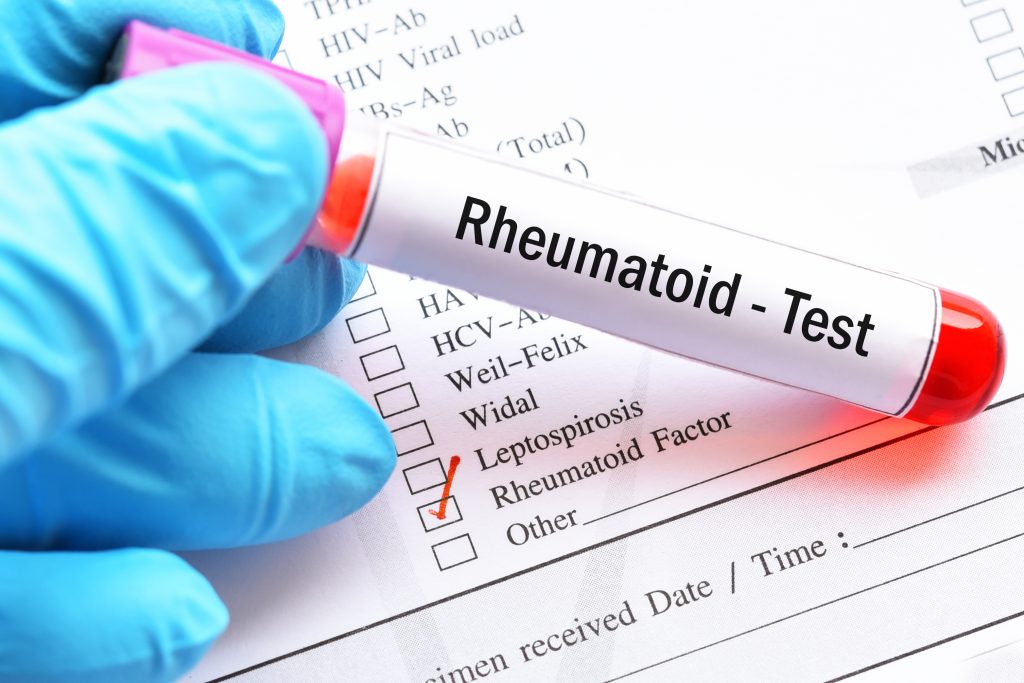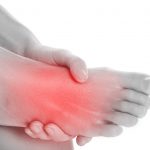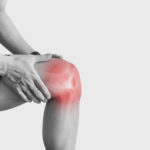June 10, 2021
How to Treat Rheumatoid Arthritis
Living with rheumatoid arthritis can be extremely difficult due to the way this chronic autoimmune condition causes severe joint pain. Rheumatoid arthritis can interfere with your ability to perform everyday tasks and may lead to deformity when left unaddressed. Seeking treatment for rheumatoid arthritis can help you experience relief from your symptoms and improve your quality of life.
Continue reading to learn more about the symptoms of rheumatoid arthritis and effective treatments for this condition that may be available from your doctor.
What is Rheumatoid Arthritis?
Rheumatoid arthritis is a chronic autoimmune disorder in which your immune system attacks your tissues and joints to cause symptoms, including joint pain, swelling, and stiffness. This autoimmune condition can affect joints anywhere in the body, though it occurs most frequently in the hands, wrists, and knees.
Dr. Lien Lam a family medicine physician with Healthcare Associates of Texas in Heath adds, “Rheumatoid arthritis is an autoimmune disorder where your own antibodies attack your joints and cause inflammation and degeneration whereas osteoarthritis is arthritis due to wear and tear over time.”
Rheumatoid arthritis can also affect tissues in various other organs and areas of the body, such as the eyes, skin, lungs, and heart. Over time, this condition can gradually lead to bone erosion and deformity in certain joints.
Rheumatoid arthritis cannot be fully cured, though it may be improved with treatment and healthy lifestyle behaviors. Seeking treatment early on is important, as doing so may help you delay or prevent this condition from becoming severe and causing disability.
What Causes Rheumatoid Arthritis?
Rheumatoid arthritis occurs when your immune system attacks the lining of the membrane that surrounds your joints, known as the synovium. As a result, the synovium becomes inflamed and thickened, which destroys bones and cartilage inside the joints. Over time, the tendons and ligaments supporting these joints become weakened and stretched to increase the risk of deformity.
“Risks for rheumatoid arthritis include genetics or family history. Women are more likely to develop rheumatoid arthritis than men, and although rheumatoid arthritis can occur at any age; it is more likely to occur in the younger population,” says Dr. Lam.
Furthermore, certain risk factors can increase your risk of developing rheumatoid arthritis. These risk factors include: 
- Being a woman
- Having never given birth
- Being middle-aged or older
- Having a family history of rheumatoid arthritis
- Being a smoker
- Being overweight or obese
- Exposure to toxins such as asbestos, dust, and silica
“Most rheumatoid arthritis patients have family history of Rheumatoid arthritis but there are some cases that are acquired due to severe infection, drug allergy, or foreign chemical exposure,” Dr. Lam explains.
What Are the Symptoms Of Rheumatoid Arthritis?
Rheumatoid arthritis symptoms affect everyone differently and can range from mild to severe.
Common symptoms include:
- Pains and aches in two or more joints
- Warmth, tenderness, swelling, and/or stiffness in two or more joints
- Severe joint stiffness in the morning or after periods of inactivity
- Identical symptoms on both sides of the body
- Fatigue
- Weakness
- Fever
- Loss of appetite
- Weight loss
Early-stage rheumatoid arthritis may affect smaller joints first, such as those in the knuckles and toes. As the disease worsens, symptoms may spread to the wrists, elbows, ankles, knees, and hips.
“The most common symptoms I see from rheumatoid arthritis patients are joint pain, swelling, and stiffness,” Dr. Lam adds.
What Are the 4 Stages Of Rheumatoid Arthritis?
There are four main stages of rheumatoid arthritis disease progression.
Stage 1 is early-stage rheumatoid arthritis, which is characterized by inflammation in the joint. The swelling caused by this inflammation can trigger symptoms, including joint pain and stiffness. Dr. Lam says, “The patient may not even notice much early on in the disease process. Symptoms are worst in the morning and usually get better as they go along in their day.”
Stage 2 is moderate-stage rheumatoid arthritis, during which continued inflammation can damage cartilage in the joint to cause pain and limited range of motion. For example, if you have rheumatoid arthritis in your hands, you may have difficulty bending your fingers.
Stage 3 is considered severe rheumatoid arthritis, where both bone and cartilage become damaged. If you have stage 3 disease, you may experience swelling and pain where bones have eroded and are rubbing against one another. You may also experience more severe limitations with range of motion and muscle weakness and deformity.
Stage 4 is also known as end-stage rheumatoid arthritis. During stage 4, your joints may be destroyed and no longer work. Your bones may be fused together and you may still experience swelling, stiffness, and pain. Stage 4 tends to develop gradually over a period of years, though some people with rheumatoid arthritis do not experience stage 4 during their lifetime.
“Usually we see the patients at stage two or three when their symptoms have worsened,” Dr. Lam adds.
How to Test for Rheumatoid Arthritis
Rheumatoid arthritis may be diagnosed with a physical exam, during which your doctor will feel and examine the joints causing problems. Your doctor may also perform an X-ray, blood test, and imaging tests.
An X-ray can provide your doctor with a more accurate view of your bones and joints and reveal whether your bones have eroded and the spaces between your joints have narrowed. A blood test can help your doctor identify joint inflammation, along with certain antibodies that may indicate the presence of rheumatoid arthritis. Magnetic resonance imaging (MRI) and ultrasound tests can help your doctor determine the severity of your condition.
“I usually check for rheumatoid factor, anti-CCP (anti-citrullinated protein antibodies), or ANA with confirmation panel. X-rays can help confirm diagnosis in later stages but sometimes tests can be negative and you have to go with the patient’s history and clinical presentation,” Dr. Lam explains.
Following your rheumatoid arthritis diagnosis, your doctor will contact you to discuss your available treatment options.
How Can Rheumatoid Arthritis Be Treated?
“It’s hard to avoid rheumatoid arthritis if it’s genetic. However, you can lower your chances of disease or rapid progression by quitting smoking, avoiding toxic environments, eating a healthy diet (such as anti-inflammatory foods), and avoiding obesity,” Dr. Lam states.
Rheumatoid arthritis is typically treated using medications, physical therapy, and surgery.
Dr. Lam also says, “treatments involves immunosuppressants to slow the disease progression, disease modifying anti-rheumatic drugs called DMARDs, anti-inflammatories, in certain cases steroids, and physical therapy. These medications all have their own side effects such as suppressing the immune system but the benefits tend to outweigh the risks over all. In severe cases, the patient may need surgery or joint replacement.”
Medications
Medications commonly used in rheumatoid arthritis treatment include nonsteroidal anti-inflammatory drugs (NSAIDs), corticosteroids, disease-modifying antirheumatic drugs (DMARDs), and biologic response modifiers.
NSAIDs may help reduce joint pain and inflammation, while corticosteroids may slow joint damage in addition to reducing pain and inflammation. DMARDs may help slow the progression of your condition and save your tissues and joints from permanent damage. Biologic response modifiers can target specific parts of the immune system contributing to your symptoms. If you and your doctor are considering using medications to treat your condition, be sure to ask about any potential risks and side effects.
Physical Therapy
A physical or occupational therapist can show you a series of exercises that can help you maintain flexibility and range of motion in the affected joints. A therapist may also recommend one or more medical devices that can make your condition more manageable.
Surgery
Your doctor may recommend having surgery to repair damaged joints if medications and physical therapy fail to improve symptoms or slow the progression of your rheumatoid arthritis. Synovectomy, tendon repair, joint fusion, and joint replacement are common surgical methods used in rheumatoid arthritis treatment. These surgeries focus on removing, repairing, or replacing damaged joints.
Lifestyle Changes
Certain lifestyle and self-care behaviors may also help you reduce and manage your symptoms, especially when combined with the above medical treatments. Exercise may help stabilize joints by strengthening surrounding muscles and combat fatigue related to rheumatoid arthritis. Applying heat or cold to affected joints may help reduce pain, while a cold compress may also reduce swelling.
Certain nutritional supplements may also help reduce symptoms, such as omega-3 fish oil supplements that reduce joint stiffness. Consult with your doctor before taking any nutritional supplements, as some may interfere with your medications.
“There’s currently no cure for rheumatoid arthritis. But patients can go into remission with treatments which makes them feel like they no longer have the condition,” says Dr. Lam.
Healthcare Associates of Texas is home to a large team of board-certified doctors and medical professionals who can diagnose and treat rheumatoid arthritis. To make or request an appointment on our website.
DISCLAIMER
The information featured in this site is general in nature. The site provides health information designed to complement your personal health management. It does not provide medical advice or health services and is not meant to replace professional advice or imply coverage of specific clinical services or products. The inclusion of links to other web sites does not imply any endorsement of the material on such websites.




